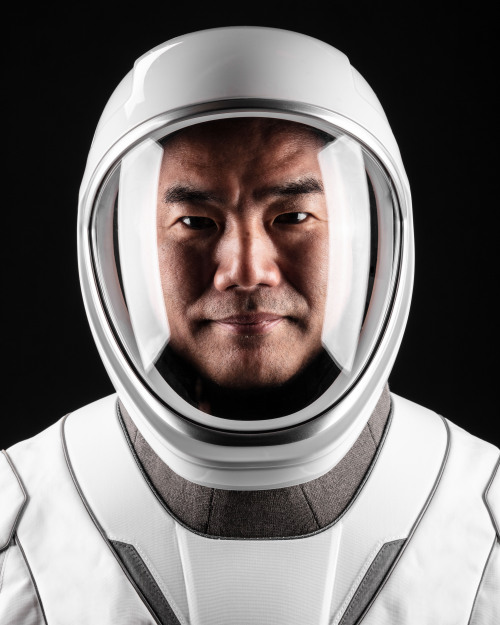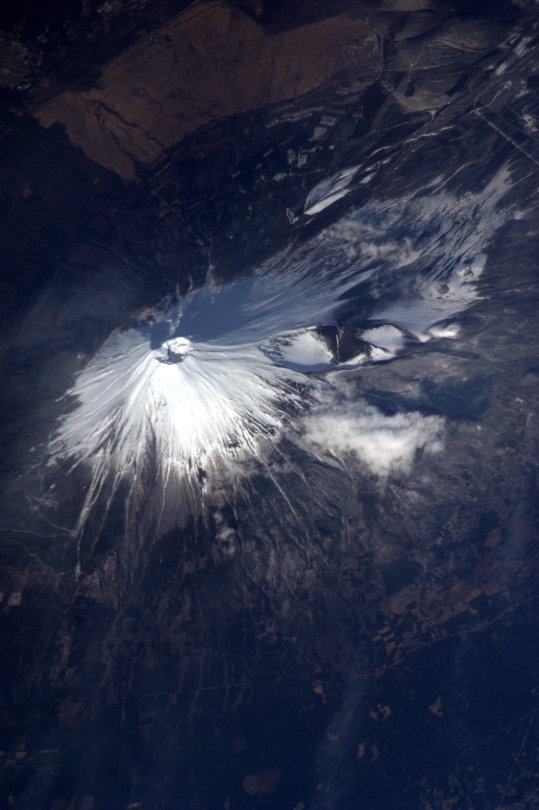NASA Spotlight: Astronaut Soichi Noguchi

NASA Spotlight: Astronaut Soichi Noguchi
Soichi Noguchi was selected as an astronaut with the Japan Aerospace Exploration Agency in 1996. A native of Yokohama, Kanagawa, he is currently a mission specialist for NASA’s SpaceX Crew-1 launch taking flight to the International Space Station on Nov. 14. Soichi will be the first international crewmember on Crew Dragon and the first international partner astronaut to fly aboard three types of orbital spacecraft – the U.S. space shuttle, the Russian Soyuz, and now the SpaceX Crew Dragon! Talk about impressive. He received a B.S. in Aeronautical Engineering in 1989, master’s degree in Aeronautical Engineering in 1991, Doctor of Philosophy in Advanced Interdisciplinary Studies in 2020, all from the University of Tokyo.
Soichi took time from preparing for his historic mission to answer questions about his life and career:
You recently earned a doctorate in philosophy. What made you do it?
After my second flight, I started this research about your sensory system in zero gravity. I used a my own personal video, which I took during my last two flights at the International Space Station. I had a lot of interesting discussions amongst young professionals and students at the University of Tokyo about the research. It was a fun experience – but I would not do it again!
Space is a risky business. Why do it?
Space IS definitely a risky business. But the reward is higher than the risk so that’s why we take it.
Do you have a message for boys and girls in Japan who are interested in science and engineering?
Three words: Space. Is. Waiting.

Aside from mission objectives and tasks, what’s a personal goal for this mission?
We have a lot of interesting missions to do, but my personal goal is to return home with lots of fun stories.

What was it like to get the phone call to become an astronaut?
It was 25 years ago, but I still remember the voice vividly. I got a call from Dr. Mamoru Mohri, the very first JAXA astronaut, and he said “Welcome to the Astronaut Corps.” When I got the call to be part of the Crew-1 mission, I was a lot less nervous than when I was assigned to my first mission, but the excitement remains the same.
Can you describe your crew mate Mike Hopkins in one sentence?
He is a natural leader that takes care of the team really well, and he’s fun to play around with.

Star Trek or Star Wars?
Star Wars… just because!

Can you share your favorite photo or video that you took in space?
My favorite photo is Mount Fuji because I see the mountain almost every day when I was a child. It’s definitely breathtaking to see Mount Fuji from space.

What personal items did you decide to pack for launch and why?
I have lots of family photos, and I would put it inside my sleep station. Definitely one of the most challenging things about spaceflight is not experiencing zero gravity, not the rocket, but time away from family.
How would you describe spacewalking outside the space station?
It’s an excursion. The view of the Earth is just breathtaking because you are just one glass away from the vacuum of space. There’s nothing between you and Earth.

What are you most excited about for the future of human space exploration?
I would say I’m most excited for interplanetary travel to become more common so that the school kids can go to Mars on their field trip.
What would you say to someone looking to follow in your footsteps?
Don’t worry, be happy!
How has spaceflight evolved since your first launch and stay aboard the International Space Station in 2005?
This is definitely an exciting moment. We’re starting to see more players in the game. SpaceX is the frontrunner, but soon we’ll see Boeing, Sierra Nevada and Axiom. So the International Space Station will soon have more players involved, and it will be a lot more fun!
Thank you for your time, Soichi, and good luck on your historic mission! Get to know a bit more about Soichi and his NASA astronaut crew mates Victor Glover, Michael Hopkins, and Shannon Walker in the video above.
Watch LIVE launch coverage beginning at 3:30 p.m. EST on Nov. 14 HERE.
Make sure to follow us on Tumblr for your regular dose of space: http://nasa.tumblr.com
More Posts from Thehkr and Others
Black Holes Dine on Stellar Treats!

See that tiny blob of light, circled in red? Doesn’t look like much, does it? But that blob represents a feast big enough to feed a black hole around 30 million times the mass of our Sun! Scientists call these kinds of stellar meals tidal disruption events, and they’re some of the most dramatic happenings in the cosmos.

Sometimes, an unlucky star strays too close to a black hole. The black hole’s gravity pulls on the star, causing it to stretch in one direction and squeeze in another. Then the star pulls apart into a stream of gas. This is a tidal disruption event. (If you’re worried about this happening to our Sun – don’t. The nearest black hole we know about is over 1,000 light-years away. And black holes aren’t wild space vacuums. They don’t go zipping around sucking up random stars and planets. So we’re pretty safe from tidal disruption events!)

The trailing part of the stream gets flung out of the system. The rest of the gas loops back around the black hole, forming a disk. The material circling in the disk slowly drifts inward toward the black hole’s event horizon, the point at which nothing – not even light – can escape. The black hole consumes the gas and dust in its disk over many years.

Sometimes the black hole only munches on a passing star – we call this a partial tidal disruption event. The star loses some of its gas, but its own gravity pulls it back into shape before it passes the black hole again. Eventually, the black hole will have nibbled away enough material that the star can’t reform and gets destroyed.

We study tidal disruptions, both the full feasts and the partial snacks, using many kinds of telescopes. Usually, these events are spotted by ground-based telescopes like the Zwicky Transient Facility and the All-Sky Automated Survey for Supernovae network.

They alert other ground- and space-based telescopes – like our Neil Gehrels Swift Observatory (illustrated above) and the European Space Agency’s XMM-Newton – to follow up and collect more data using different wavelengths, from visible light to X-rays. Even our planet-hunting Transiting Exoplanet Survey Satellite has observed a few of these destructive wonders!
We’re also studying disruptions using multimessenger astronomy, where scientists use the information carried by light, particles, and space-time ripples to learn more about cosmic objects and occurrences.

But tidal disruptions are super rare. They only happen once every 10,000 to 100,000 years in a galaxy the size of our own Milky Way. Astronomers have only observed a few dozen events so far. By comparison, supernovae – the explosive deaths of stars – happen every 100 years or so in a galaxy like ours.
That’s why scientists make their own tidal disruptions using supercomputers, like the ones shown in the video here. Supercomputers allow researchers to build realistic models of stars. They can also include all of the physical effects they’d experience whipping ‘round a black hole, even those from Einstein’s theory of general relativity. They can alter features like how close the stars get and how massive the black holes are to see how it affects what happens to the stars. These simulations will help astronomers build better pictures of the events they observe in the night sky.
Keep up with what’s happening in the universe and how we study it by following NASA Universe on Twitter and Facebook.
Make sure to follow us on Tumblr for your regular dose of space!

We Just Found Water on the Moon’s Sunlit Surface

When the first Apollo astronauts returned from the Moon in 1969, the Moon’s surface was thought to be completely dry. Over the last 20 years, orbital and impactor missions confirmed water ice is present inside dark, permanently shadowed craters around the poles. But could water survive in the Moon’s sunnier regions? Using SOFIA, the world’s largest flying observatory, we found water on a sunlit lunar surface for the first time. The discovery suggests water may be distributed across the Moon’s surface, which is a whopping 14.6 million square miles. Scientists think the water could be stored inside glass beadlike structures within the soil that can be smaller than the tip of a pencil. The amount of water detected is equivalent to about a 12-ounce bottle trapped in a cubic meter volume of soil. While that amount is 100 times less than what’s found in the Sahara Desert, discovering even small amounts raises new questions about how this precious resource is created and persists on the harsh, airless lunar surface. Learn more about the discovery:
Water was found in Clavius Crater, one of the Moon’s largest craters visible from Earth.

The water may be delivered by tiny meteorite impacts…

…or formed by the interaction of energetic particles ejected from the Sun.

Follow-up observations by SOFIA will look for water in additional sunlit locations on the Moon.

We are eager to learn all we can about the presence of water in advance of sending the first woman and next man to the lunar surface in 2024 under our Artemis program. What we learn on and around the Moon will help us take the next giant leap – sending astronauts to Mars.
Make sure to follow us on Tumblr for your regular dose of space: http://nasa.tumblr.com



Hadas Cohen
Cosmic Alphabet Soup: Classifying Stars

If you’ve spent much time stargazing, you may have noticed that while most stars look white, some are reddish or bluish. Their colors are more than just pretty – they tell us how hot the stars are. Studying their light in greater detail can tell us even more about what they’re like, including whether they have planets. Two women, Williamina Fleming and Annie Jump Cannon, created the system for classifying stars that we use today, and we’re building on their work to map out the universe.

By splitting starlight into spectra – detailed color patterns that often feature lots of dark lines – using a prism, astronomers can figure out a star’s temperature, how long it will burn, how massive it is, and even how big its habitable zone is. Our Sun’s spectrum looks like this:

Astronomers use spectra to categorize stars. Starting at the hottest and most massive, the star classes are O, B, A, F, G (like our Sun), K, M. Sounds like cosmic alphabet soup! But the letters aren’t just random – they largely stem from the work of two famous female astronomers.

Williamina Fleming, who worked as one of the famous “human computers” at the Harvard College Observatory starting in 1879, came up with a way to classify stars into 17 different types (categorized alphabetically A-Q) based on how strong the dark lines in their spectra were. She eventually classified more than 10,000 stars and discovered hundreds of cosmic objects!

That was back before they knew what caused the dark lines in spectra. Soon astronomers discovered that they’re linked to a star’s temperature. Using this newfound knowledge, Annie Jump Cannon – one of Fleming’s protégés – rearranged and simplified stellar classification to include just seven categories (O, B, A, F, G, K, M), ordered from highest to lowest temperature. She also classified more than 350,000 stars!

Type O stars are both the hottest and most massive in the new classification system. These giants can be a thousand times bigger than the Sun! Their lifespans are also around 1,000 times shorter than our Sun’s. They burn through their fuel so fast that they only live for around 10 million years. That’s part of the reason they only make up a tiny fraction of all the stars in the galaxy – they don’t stick around for very long.

As we move down the list from O to M, stars become progressively smaller, cooler, redder, and more common. Their habitable zones also shrink because the stars aren’t putting out as much energy. The plus side is that the tiniest stars can live for a really long time – around 100 billion years – because they burn through their fuel so slowly.

Astronomers can also learn about exoplanets – worlds that orbit other stars – by studying starlight. When a planet crosses in front of its host star, different kinds of molecules in the planet’s atmosphere absorb certain wavelengths of light.
By spreading the star’s light into a spectrum, astronomers can see which wavelengths have been absorbed to determine the exoplanet atmosphere’s chemical makeup. Our James Webb Space Telescope will use this method to try to find and study atmospheres around Earth-sized exoplanets – something that has never been done before.

Our upcoming Nancy Grace Roman Space Telescope will study the spectra from entire galaxies to build a 3D map of the cosmos. As light travels through our expanding universe, it stretches and its spectral lines shift toward longer, redder wavelengths. The longer light travels before reaching us, the redder it becomes. Roman will be able to see so far back that we could glimpse some of the first stars and galaxies that ever formed.
Learn more about how Roman will study the cosmos in our other posts:
Roman’s Family Portrait of Millions of Galaxies
New Rose-Colored Glasses for Roman
How Gravity Warps Light
Make sure to follow us on Tumblr for your regular dose of space!

Meet the Artemis Team Returning Humans to the Moon
We. Are. Going 🌙
Today, we introduced the eighteen NASA Astronauts forming the Artemis team. Together, they’ll use their diverse range of backgrounds, expertise, and experience to pave the way for humans to return to the Moon, to stay.
Meet the heroes of the future who’ll carry us back to the Moon and beyond - the Artemis generation.
Joe Acaba

Fun fact: Joe is a veteran of the U.S. Peace Corps! Get to know Joe personally with this video –> Watch HERE.
Kayla Barron

Fun fact: Kayla got her start in public service through serving in the U.S. Navy. Get to know Kayla personally with this video –> Watch HERE.
Raja Chari

Fun fact: Raja’s nickname is “Grinder,” and he comes from a test pilot background. Get to know Raja personally with this video –> Watch HERE.
Jessica Watkins

Fun fact: Jessica is a rugby national champion winner and geologist. Get to know Jessica personally with this video –> Watch HERE.
Matthew Dominick

Fun fact: Matthew sums himself up as a father, a husband and an explorer. Get to know Matthew personally with this video –> Watch HERE.
Jasmin Moghbeli

Fun fact: Jasmin says she still wakes up every morning and it feels like a “pinch me moment” to think she’s actually an astronaut right now. Get to know Jasmin personally with this video –> Watch HERE.
Victor Glover

Fun fact: Victor’s dream is to work on the surface of the Moon. Get to know Victor personally with this video –> Watch HERE.
Jessica Meir

Fun fact: Jessica was five years old when she knew she wanted to be an astronaut. Get to know Jessica personally with this video –> Watch HERE.
Woody Hoburg

Fun fact: Woody used to spend summers away from graduate school working search and rescue in Yosemite National Park. Get to know Woody personally with this video –> Watch HERE.
Anne McClain

Fun fact: Anne is a West Point alumni who describes herself as an impractical dreamer. Get to know Anne personally with this video –> Watch HERE.
Jonny Kim

Fun fact: Jonny is also a U.S. Navy SEAL with a medical degree from Harvard. Get to know Jonny personally with this video –> Watch HERE.
Nicole Mann

Fun fact: Nicole is a U.S. Lieutenant Colonel in the Marine Corps! Get to know Nicole personally with this video –> Watch HERE.
Kjell Lindgren

Fun fact: Kjell was a flight surgeon, a physician who takes care of astronauts, before applying to be an astronaut himself! Get to know Kjell personally with this video –> Watch HERE.
Christina Koch

Fun fact: Christina set a record for the longest single spaceflight by a woman with a total of 328 days in space. Get to know Christina personally with this video –> Watch HERE.
Frank Rubio

Fun fact: Frank was a Black Hawk helicopter pilot in the U.S. Army and family medical physician. Get to know Frank personally with this video –> Watch HERE.
Stephanie Wilson

Fun fact: Stephanie was the voice in Mission Control leading our NASA Astronauts for the all-woman spacewalk last year. Get to know Stephanie personally with this video –> Watch HERE.
Scott Tingle

Fun fact: Scott said he wanted to be an astronaut in a high school class and the students laughed – look at him now. Get to know Scott personally with this video –> Watch HERE.
Kate Rubins

Fun fact: Kate is actually IN space right now, so she will have to get her official portrait when she comes home! She is also the first person to sequence DNA in space. Get to know Kate personally with this video –> Watch HERE. Stay up to date with our Artemis program and return to the Moon by following NASA Artemis on Twitter, Facebook and Instagram.
Make sure to follow us on Tumblr for your regular dose of space: http://nasa.tumblr.com.

Roman's primary structure hangs from cables as it moves into the big clean room at NASA's Goddard Space Flight Center.
What Makes the Clean Room So Clean?
When you picture NASA’s most important creations, you probably think of a satellite, telescope, or maybe a rover. But what about the room they’re made in? Believe it or not, the room itself where these instruments are put together—a clean room—is pretty special.
A clean room is a space that protects technology from contamination. This is especially important when sending very sensitive items into space that even small particles could interfere with.
There are two main categories of contamination that we have to keep away from our instruments. The first is particulate contamination, like dust. The second is molecular contamination, which is more like oil or grease. Both types affect a telescope’s image quality, as well as the time it takes to capture imagery. Having too many particles on our instruments is like looking through a dirty window. A clean room makes for clean science!

Two technicians clean the floor of Goddard’s big clean room.
Our Goddard Space Flight Center in Greenbelt, Maryland has the largest clean room of its kind in the world. It’s as tall as an eight-story building and as wide as two basketball courts.
Goddard’s clean room has fewer than 3,000 micron-size particles per cubic meter of air. If you lined up all those tiny particles, they’d be no longer than a sesame seed. If those particles were the size of 16-inch (0.4-meter) inflatable beach balls, we’d find only 3,000 spread throughout the whole body of Mount Everest!

A clean room technician observes a sample under a microscope.
The clean room keeps out particles larger than five microns across, just seven percent of the width of an average human hair. It does this via special filters that remove around 99.97% of particles 0.3 microns and larger from incoming air. Six fans the size of school buses spin to keep air flowing and pressurize the room. Since the pressure inside is higher, the clean air keeps unclean air out when doors open.

A technician analyzes a sample under ultraviolet light.
In addition, anyone who enters must wear a “bunny suit” to keep their body particles away from the machinery. A bunny suit covers most of the person inside. Sometimes scientists have trouble recognizing each other while in the suits, but they do get to know each other’s mannerisms very well.

This illustration depicts the anatomy of a bunny suit, which covers clean room technicians from head to toe to protect sensitive technology.
The bunny suit is only the beginning: before putting it on, team members undergo a preparation routine involving a hairnet and an air shower. Fun fact – you’re not allowed to wear products like perfume, lotion, or deodorant. Even odors can transfer easily!

Six of Goddard’s clean room technicians (left to right: Daniel DaCosta, Jill Bender, Anne Martino, Leon Bailey, Frank D’Annunzio, and Josh Thomas).
It takes a lot of specialists to run Goddard’s clean room. There are 10 people on the Contamination Control Technician Team, 30 people on the Clean Room Engineering Team to cover all Goddard missions, and another 10 people on the Facilities Team to monitor the clean room itself. They check on its temperature, humidity, and particle counts.

A technician rinses critical hardware with isopropyl alcohol and separates the particulate and isopropyl alcohol to leave the particles on a membrane for microscopic analysis.
Besides the standard mopping and vacuuming, the team uses tools such as isopropyl alcohol, acetone, wipes, swabs, white light, and ultraviolet light. Plus, they have a particle monitor that uses a laser to measure air particle count and size.
The team keeping the clean room spotless plays an integral role in the success of NASA’s missions. So, the next time you have to clean your bedroom, consider yourself lucky that the stakes aren’t so high!
Make sure to follow us on Tumblr for your regular dose of space!

No matter what happens in life, be good to people.
Being good to people is a wonderful legacy to leave behind.
[ Taylor Swift ]
How the Sun Affects Asteroids in Our Neighborhood
It’s no secret the Sun affects us here on Earth in countless ways, from causing sunburns to helping our houseplants thrive. The Sun affects other objects in space, too, like asteroids! It can keep them in place. It can move them. And it can even shape them.

Asteroids embody the story of our solar system’s beginning. Jupiter’s Trojan asteroids, which orbit the Sun on the same path as the gas giant, are no exception. The Trojans are thought to be left over from the objects that eventually formed our planets, and studying them might offer clues about how the solar system came to be.
Over the next 12 years, NASA’s Lucy mission will visit eight asteroids—including seven Trojans— to help answer big questions about planet formation and the origins of our solar system. It will take the spacecraft about 3.5 years to reach its first destination.
How does the Sun affect what Lucy might find?
Place in Space

Credits: Astronomical Institute of CAS/Petr Scheirich
The Sun makes up 99.8% of the solar system’s mass and exerts a strong gravitational force as a result. In the case of the Trojan asteroids that Lucy will visit, their very location in space is dictated in part by the Sun’s gravity. They are clustered at two Lagrange points. These are locations where the gravitational forces of two massive objects—in this case the Sun and Jupiter—are balanced in such a way that smaller objects (like asteroids or satellites) stay put relative to the larger bodies. The Trojans lead and follow Jupiter in its orbit by 60° at Lagrange points L4 and L5.
Pushing Asteroids Around (with Light!)

The Sun can move and spin asteroids with light! Like many objects in space, asteroids rotate. At any given moment, the Sun-facing side of an asteroid absorbs sunlight while the dark side sheds energy as heat. When the heat escapes, it creates an infinitesimal amount of thrust, pushing the asteroid ever so slightly and altering its rotational rate. The Trojans are farther from the Sun than other asteroids we’ve studied before, and it remains to be seen how sunlight affects their movement.
Cracking the Surface (Also with Light!)

The Sun can break asteroids, too. Rocks expand as they warm and contract when they cool. This repeated fluctuation can cause them to crack. The phenomenon is more intense for objects without atmospheres, such as asteroids, where temperatures vary wildly. Therefore, even though the Trojans are farther from the Sun than rocks on Earth, they’ll likely show more signs of thermal fracturing.
Solar Wind-Swept

Like everything in our solar system, asteroids are battered by the solar wind, a steady stream of particles, magnetic fields, and radiation that flows from the Sun. For the most part, Earth’s magnetic field protects us from this bombardment. Without magnetic fields or atmospheres of their own, asteroids receive the brunt of the solar wind. When incoming particles strike an asteroid, they can kick some material off into space, changing the fundamental chemistry of what’s left behind.
Follow along with Lucy’s journey with NASA Solar System on Instagram, Facebook, and Twitter, and be sure to tune in for the launch at 5 a.m. EDT (09:00 UTC) on Saturday, Oct. 16 at nasa.gov/live.
Make sure to follow us on Tumblr for your regular dose of space!
-
 barelyatouch liked this · 1 year ago
barelyatouch liked this · 1 year ago -
 ramakanthdorai-blog liked this · 1 year ago
ramakanthdorai-blog liked this · 1 year ago -
 mboswa-blog liked this · 1 year ago
mboswa-blog liked this · 1 year ago -
 khomsan-10110 liked this · 1 year ago
khomsan-10110 liked this · 1 year ago -
 lovehimeheart liked this · 2 years ago
lovehimeheart liked this · 2 years ago -
 mona-vainy liked this · 2 years ago
mona-vainy liked this · 2 years ago -
 bloodhaven99 reblogged this · 2 years ago
bloodhaven99 reblogged this · 2 years ago -
 bloodhaven99 liked this · 2 years ago
bloodhaven99 liked this · 2 years ago -
 ecosmowarrior liked this · 2 years ago
ecosmowarrior liked this · 2 years ago -
 grandpom liked this · 3 years ago
grandpom liked this · 3 years ago -
 juriprifti reblogged this · 3 years ago
juriprifti reblogged this · 3 years ago -
 astronomicai liked this · 3 years ago
astronomicai liked this · 3 years ago -
 azalearish liked this · 3 years ago
azalearish liked this · 3 years ago -
 yodogorgodwhatever liked this · 3 years ago
yodogorgodwhatever liked this · 3 years ago